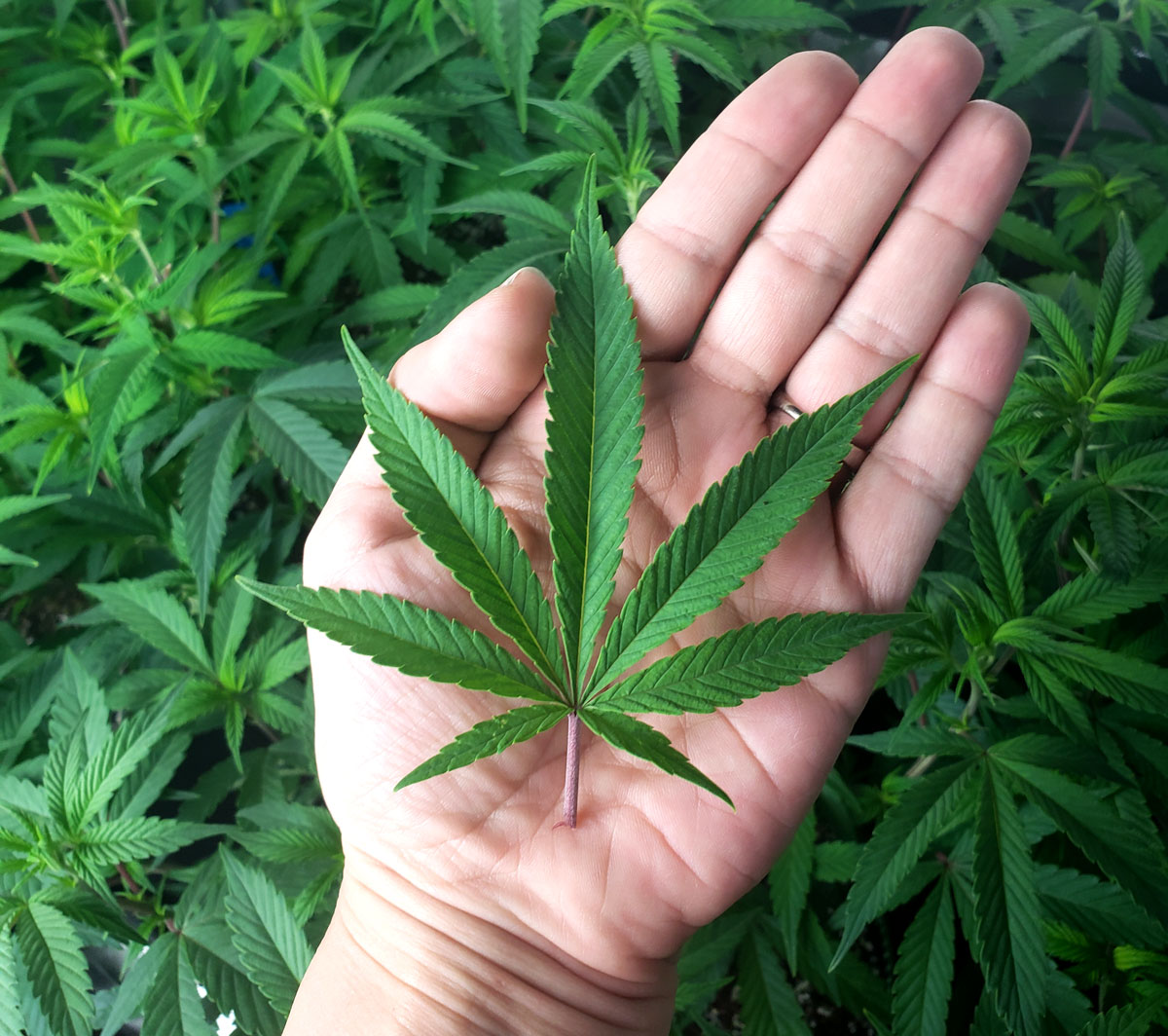As mentioned in the last blog, there are 7 common reasons why cannabis plants grow slow. We’ve introduced the first three reasons, and for the third reason “unhappy roots” we have more to say.
Overwatering is most common when you have a small plant in a big pot because the roots aren’t drinking much yet. Luckily, this can be overcome with proper seedling watering practices. Yet even if you’re watering plants perfectly, a poor draining grow medium (such as thick muddy soil, or a pot without drainage holes) will still trigger root problems and slow growth due to lack of oxygen at the roots.
The following symptoms of droopiness and yellowing are the result of a thick grow medium, small plant in a big pot, and chronic overwatering.
Overwatering– This seeding is almost a month old but it’s stayed small due to being watered too much and too often.
Underwatering is less common but may be even worse for seedlings. Underwatered seedlings grow slow, stay small, and often have a dark coloring. When plants don’t get enough water, they grow slowly and may turn dark green.
If your plant stays in a too-small pot without any room to spread out its roots, growth slows and plants stay small. If you start seeing droopiness and deficiencies on a plant that has been in the same pot for a while, it may be root bound (the roots have wrapped around the edges of the container). This causes symptoms similar to over/underwatering but is difficult or impossible to overcome with watering practices.
With a heavily rootbound plant, you may need to transplant to a bigger pot to stop the symptoms. Just remember to avoid disturbing roots during transplant (try to keep roots in a solid bunch and put the rootball directly into a hole in the new medium) so you don’t unintentionally stress the roots from being moved around too much.
4.) Nutrient Deficiencies
Seedlings started in soil won’t need nutrients right away, as they can find nutrients in the soil. However, if the pH at the roots is too high or low (6-7 pH is ideal for soil), plants can’t absorb the nutrients properly because nutrients take a different chemical form at high or low pH ranges.
Plants grown in coco or hydroponics need to receive nutrients in the water from when they’re seedlings. Because plain water and coco don’t contain significant amounts of nutrients, the only nutrients plants get are the ones you give them. That means if you’re not giving any nutrients, the plants will grow extremely slowly and eventually turn yellow. Coco and hydro growers also need to adjust the pH of their water to ensure nutrients are absorbed properly. In coco or hydro, the optimum range is 5.5-6.5 pH.
If you’re seeing nutrient deficiencies, chances are your plant isn’t growing as fast as it could. This seedling is growing slowly due to an iron deficiency caused by high pH at the roots (it’s also overwatered, which isn’t helping).
5.) Bugs or Other Pests
Unfortunately, plant pests like broad mites, spider mites, thrips, or even a ton of fungus gnats can slow down growth as the plant spends energy repairing the damage. Sometimes growers mistake the symptoms for a nutrient deficiency or other problem. If you’re noticing spots, patches, or anything unusual on your leaves, don’t ignore it!
Broad mites cause leaves to almost look shiny;
Spider mites much on your plants and create small yellow specks all over your leaves. You may also see webbing.
Thrips also make speckles on your leaves, though they appear in irregular patches as opposed to individual specks.
Fungus gnats look like tiny flies buzzing around your soil and usually aren’t too serious. Just water the plant less often. However, in big numbers, they will hurt plant growth, especially on smaller plants. The following symptoms are caused by an extreme fungus gnat infestation.
6.) Genetics & Natural Variation
Genetics make a difference. Some strains simply germinate and grow faster than others. On top of the genetics, seed storage matters. Older seeds tend to germinate slower and plants are often slower growing at first. Seeds stored in extreme temperatures may also be harder to germinate and easier to stunt.
Even if genetics are the same, you can give the same care and end up with different growth rates between plants. For example, if you take multiple clones and grow them in the same garden, some will grow faster despite the fact their genetics are identical. That’s just the way nature works. So if you’re noticing only one plant growing slowly, while all the others seem fine, that’s a sign you may just have a runt on your hand. It might have nothing to do with you!
Even when plants have the same genetics and are grown in identical conditions, sometimes you end up with runts. That’s a natural part of growing and it may not be your fault.
To be continued…

